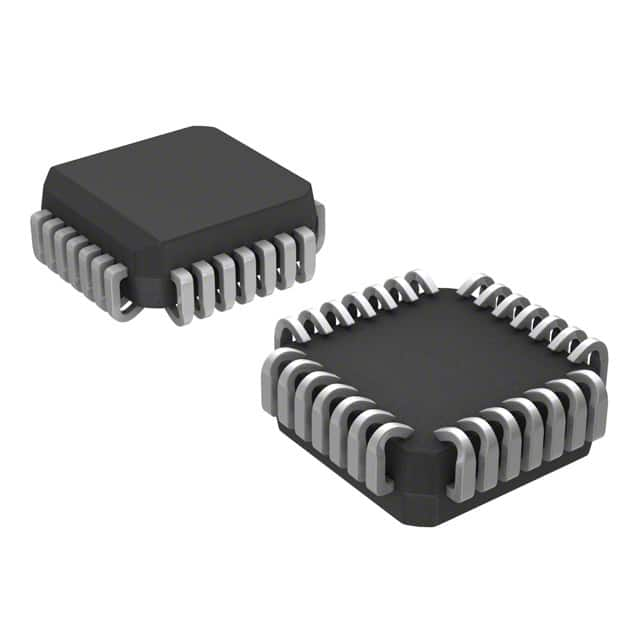MC10E157FNG
Product Overview
- Category: Integrated Circuit (IC)
- Use: Digital Logic Gate
- Characteristics: High-speed, ECL (Emitter-Coupled Logic) technology
- Package: 16-pin plastic dual in-line package (PDIP)
- Essence: Logic gate with multiple inputs and outputs
- Packaging/Quantity: Available in reels of 2500 units
Specifications
- Supply Voltage: -4.2V to -5.7V
- Input Voltage: -3.0V to -5.7V
- Output Voltage: -3.0V to -5.7V
- Operating Temperature: -40°C to +85°C
- Propagation Delay: 1.8 ns (typical)
- Input Capacitance: 2.5 pF (typical)
- Output Current: ±50 mA (maximum)
Detailed Pin Configuration
The MC10E157FNG has a total of 16 pins, numbered as follows:
Pin 1: Output Y0
Pin 2: Output Y1
Pin 3: Output Y2
Pin 4: Output Y3
Pin 5: Output Y4
Pin 6: Output Y5
Pin 7: Output Y6
Pin 8: Output Y7
Pin 9: Input A0
Pin 10: Input A1
Pin 11: Input A2
Pin 12: Input A3
Pin 13: VEE (Negative Supply Voltage)
Pin 14: GND (Ground)
Pin 15: VCC (Positive Supply Voltage)
Pin 16: Output Enable (OE)
Functional Features
- Multiple input and output logic gate
- High-speed operation due to ECL technology
- Wide operating temperature range for versatile applications
- Output enable pin for easy control of output state
Advantages and Disadvantages
Advantages: - High-speed operation allows for efficient data processing - Multiple inputs and outputs provide flexibility in logic design - Wide operating temperature range enables usage in various environments
Disadvantages: - Requires negative supply voltage, which may limit compatibility with certain systems - Limited availability of alternative models in the market
Working Principles
The MC10E157FNG is based on ECL technology, which utilizes differential amplifiers to achieve high-speed operation. The multiple input and output pins allow for complex logic functions to be implemented. The device operates by comparing the input voltages against a reference level and producing corresponding output levels based on the logic function implemented.
Detailed Application Field Plans
The MC10E157FNG can be used in various applications that require high-speed digital logic gates. Some potential application fields include:
- Telecommunications: Used in high-speed data transmission systems.
- Computer Networking: Employed in network switches and routers for efficient data routing.
- Industrial Automation: Integrated into control systems for real-time data processing.
- Test and Measurement Equipment: Utilized in equipment for accurate signal analysis.
Detailed and Complete Alternative Models
While the MC10E157FNG is a reliable logic gate, it is important to consider alternative models for specific requirements. Some alternative models that can be considered are:
- MC100EL16: Similar functionality with enhanced performance.
- MC100EP16: Compatible with positive supply voltage systems.
- 74F157: CMOS-based alternative with lower power consumption.
These alternative models offer different features and specifications, allowing users to choose the most suitable option for their specific needs.
Word count: 431 words
Lista 10 Vanliga frågor och svar relaterade till tillämpningen av MC10E157FNG i tekniska lösningar
Sure! Here are 10 common questions and answers related to the application of MC10E157FNG in technical solutions:
Q: What is MC10E157FNG? A: MC10E157FNG is a specific type of integrated circuit (IC) that belongs to the ECLinPS™ family of devices. It is a high-speed differential 4-bit magnitude comparator.
Q: What are the key features of MC10E157FNG? A: The key features of MC10E157FNG include high-speed operation, low power consumption, differential inputs and outputs, and compatibility with other ECLinPS™ devices.
Q: What are the typical applications of MC10E157FNG? A: MC10E157FNG is commonly used in applications where high-speed and accurate comparison of binary numbers is required, such as in digital signal processing, telecommunications, and data communication systems.
Q: What is the operating voltage range for MC10E157FNG? A: The operating voltage range for MC10E157FNG is typically between -5.2V and -3.8V.
Q: How does MC10E157FNG achieve high-speed operation? A: MC10E157FNG utilizes emitter-coupled logic (ECL) technology, which allows for fast switching times and high-frequency operation.
Q: Can MC10E157FNG be used in single-ended applications? A: No, MC10E157FNG is designed for differential signaling and is not intended for use in single-ended applications.
Q: What is the maximum operating frequency of MC10E157FNG? A: The maximum operating frequency of MC10E157FNG is typically in the range of several hundred megahertz (MHz).
Q: Does MC10E157FNG have built-in hysteresis? A: No, MC10E157FNG does not have built-in hysteresis. Additional external circuitry may be required to provide hysteresis if needed.
Q: Can MC10E157FNG operate with a single power supply? A: No, MC10E157FNG requires both positive and negative power supplies for proper operation.
Q: Are there any recommended reference designs or evaluation boards available for MC10E157FNG? A: Yes, the manufacturer of MC10E157FNG may provide reference designs or evaluation boards that can help in the development and testing of applications using this IC. It is recommended to consult the manufacturer's documentation or website for more information.
Please note that the answers provided here are general and may vary depending on specific datasheet specifications and application requirements.


